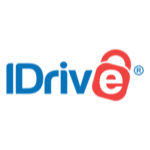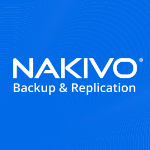List of Best Disaster Recovery Software
Showing 10 of 19 productsIDrive is a solution for all your backup and storage needs. With its advanced features and seamless performance, IDrive ensures the security and accessibility of your important data at all times. Say goodbye to the fear of data loss and hello to an e...Read IDrive Reviews
NAKIVO is the leading provider of data protection and backup software, helping businesses and organizations safeguard their critical data with ease and efficiency. With a user-friendly interface and innovative features, NAKIVO streamlines the backup...Read NAKIVO Reviews
Veeam is a leading software company that specializes in delivering innovative solutions for data backup, protection, and recovery. With its advanced technology and user-friendly interface, Veeam helps businesses of all sizes to ensure the safety and...Read Veeam Reviews
Acronis is a leading software company specializing in data and disaster recovery solutions. With over 15 years of industry experience, Acronis has become a trusted name for businesses and individuals seeking reliable protection for their crucial data...Read Acronis Reviews
Unitrends Enterprise Backup is a leading backup and recovery solution designed to safeguard critical business data and applications. Trusted by thousands of organizations, it offers a suite of robust features technologies to ensure reliable data prot...Read Unitrends Enterprise Backup Reviews
Zerto is a software designed to help businesses ensure the continuous availability and protection of their critical data and applications. With its innovative features and impeccable reliability, Zerto simplifies the process of disaster recovery and...Read Zerto Reviews
Arcserve UDP is a solution for comprehensive data protection. With its advanced technology interface, Arcserve UDP offers a seamless backup and recovery system for businesses of all sizes. Say goodbye to data loss and experience the reliability of Ar...Read Arcserve UDP Reviews
Bacula Enterprise is a backup and recovery solution for businesses of all sizes. With its advanced features and user-friendly interface, Bacula Enterprise provides peace of mind for data protection. From file backups to disaster recovery, Bacula Ente...Read Bacula Enterprise Reviews
Datto SIRIS is a data backup and recovery solution for businesses of all sizes. With powerful features and user-friendly interface, Datto SIRIS provides reliable protection for your critical data, ensuring minimal downtime and maximum productivity. G...Read Datto SIRIS Reviews
Rubrik is a leading software company offering data management solutions for enterprises, is revolutionizing the way organizations handle their data. With a user-friendly interface and powerful features, Rubrik simplifies backup, recovery, and cloud m...Read Rubrik Reviews
- What Is Disaster Recovery Software?
- Top Reasons Why Businesses Need Disaster Recovery Software?
- What Are the Top Key Features of Disaster Recovery Software?
- What Are the Top Benefits of Disaster Recovery Software?
- What Are the Steps to Choose the Right Disaster Recovery Software?
- What Are the Types of Disaster Recovery Software for Different Industries?
- What Are the Technology Trends for Best Disaster Recovery Software?
- What Are the Deployment Options for Disaster Recovery Software?
What Is Disaster Recovery Software?
Disaster recovery software assists firms in recovering from natural disasters, IT faults, or cyber security assaults. It aids in the rapid restoration of an organization's data and systems following a disaster. It also keeps an eye on the organization's systems for indications of a potential disaster or risk.
In other words, the best disaster recovery software can back up essential data or systems, detect potential dangers, and assist in the restoration of data and systems after a disaster. Any organization that wants to secure its vital data and systems in the case of a disaster should invest in disaster recovery software.
Following a disaster, top disaster recovery software can help an organization recover quickly and save time, money, customers, and reputation.
Top Reasons Why Businesses Need Disaster Recovery Software?
1. Disaster recovery software allows for the quick restoration of data and programs after a disaster or other interruption.
2. It contributes to the continuation of operations and the reliable preservation of critical data and business assets.
3. Disaster recovery tool enables businesses to restore lost data and applications swiftly in the event of hardware failure or a natural disaster.
4. It can contribute to overall system reliability by utilizing an automated method for regular backups.
5. The disaster recovery management tools can help to reduce possible losses after a catastrophic system breakdown.
6. It enables organizations to test the restoration procedure on a regular basis to guarantee that their data is recoverable.
7. Disaster recovery solution offers dependable protection in the case of a system-wide failure caused by human mistakes, power failures, or hostile attacks.
8. It contributes to the security of client data and other sensitive information.
9. When the primary system fails, disaster recovery automation tools provide quick and effective restoration of operations.
10. It provides a comprehensive answer to data redundancy requirements.
11. Disaster recovery software reduces the requirement to rebuild a whole system from the ground up in the case of a disaster.
12. It aids in the efficient use of expensive IT assets by reproducing only what is required for successful system recovery.
13. The disaster recovery management tools can assist you avoid the risks of litigation or noncompliance if your customer data is not securely preserved.
14. In the event of data loss or system breakdown, it can help reduce excessive downtime and financial damages.
15. The computer disaster recovery software provides a low-cost, streamlined option for reducing the risk of data loss and system failure.
What Are the Top Key Features of Disaster Recovery Software?
1. Cloud Integration: Cloud integration features should be provided by the best disaster recovery software in order to duplicate data and applications between on-premises and public cloud solutions.
2. System Image Replication: In the event of a disaster, computer disaster recovery software should provide near-instantaneous system image replication, allowing organizations to quickly restore their systems from backup.
3. Data Replication: Disaster recovery should also contain data replication capabilities, which allow for the creation of numerous copies of vital company data in the case of a catastrophic disaster.
4. Failover Implementation: To recover operations fast after a large outage, disaster recovery software should include automated failover capabilities.
5. Automated Testing: To replicate actual disaster scenarios and check backup mechanisms are in place and operating top disaster recovery software should have an automated testing option.
6. Policies and Scheduling: Disaster recovery software should contain policy and scheduling tools for configuring backups and replicating data and apps to meet the demands of the business.
7. Proactive Alarm System: An integrated alarm system should be included in top disaster recovery software to notify IT, workers, when backup jobs fail or other unforeseen issues develop.
8. Reporting: Disaster recovery software should create reports that allow you to "see" where your backups are taking place and track recovery timelines to guarantee that data and systems are restored safely.
9. Multi-tiered Storage: A multi-tiered storage solution, seamlessly connecting on-premises storage with public cloud storage services, should be included in the disaster recovery tool.
10. Application-Specific Solutions: To ensure that all essential elements are sufficiently secured, disaster recovery management tools should include extra application-specific recovery options.
What Are the Top Benefits of Disaster Recovery Software?
1. Improved Business Continuity: In the case of an outage or system failure, top disaster recovery software offers businesses with near-immediate access to backed-up data, allowing organizations to continue working with minimal downtime or disturbance.
2. Automation: Disaster recovery software allows businesses to schedule and automate their data backups, allowing them to swiftly construct restoration points and access data in the case of a disaster.
3. Reduced Risk: Disaster recovery software can assist lessen the risk of a data breach caused by a malicious attack or natural disasters like floods, fires, and earthquakes.
4. Cost Savings: The use of the best disaster recovery software eliminates the need for expensive third-party services, saving enterprises both time and money.
5. Increased Efficiency and Scalability: Disaster recovery software enables enterprises to replicate and restore data on demand, increasing efficiency and scalability.
6. Flexibility: Businesses can use cloud disaster recovery software to determine the optimal recovery time objective (RTO) and recovery point objective (RPO) for their specific needs.
7. Simplified Testing: Disaster recovery software simplifies the testing and validation of data backups and restorations for businesses, minimizing the complexity associated with manually checking backups.
What Are the Steps to Choose the Right Disaster Recovery Software?
1. Determine the categories of data that must be backed up: Consider the systems you have in place and the flow of data around your organization, and then make a list of the data types you need to back up. Employee records, client information, financial data, and any other vital information that you don't want to lose can all be included.
2. Determine how frequently you should back up this data: Are you creating backups on a regular basis? Do you require (or desire) hourly backups? Backups every day? Backups every week? Is it necessary to back up complete systems? Is it necessary to keep data offsite?
The answers to these questions will assist you in determining the best type of disaster recovery automation tools for your organization.
3. Examine catastrophe recovery software system alternatives: After answering the questions in steps one and two, you can start investigating and assessing para-virtualization and cloud-based solutions. Look for characteristics that fit your requirements and provide the greatest tools for your organization.
You might wish to chat with the best disaster recovery software vendor to learn more about different features and solutions.
4. Put the software through its paces: After deciding on a top disaster recovery software system, request a free trial or evaluation period. This will allow you to test the software's functionality and ensure that it is compatible with your present systems.
5. Examine the costs: Finally, consider the cost of the disaster recovery software and how it fits into your IT budget. You want to make sure it's within your budget and that you're getting the greatest deal possible.
What Are the Types of Disaster Recovery Software for Different Industries?
Organisations in various industries can choose from a variety of disaster recovery software options.
In general, these can be divided into two categories: general services supplied by software suppliers and specialised solutions specific to the demands of a certain industry.
1. Software for General Disaster Recovery: This sort of software is intended for use across different sectors and is not industry-specific. Cloud-enabled backup and restore programmes, replication and backup solutions, data recovery tools, and virtual machine solutions are examples of these solutions.
2. Industry-Specific Disaster Recovery Software: As the name suggests, these solutions are targeted to the specific requirements of a specific industry.
Financial industry solutions for banking laws, healthcare industry-specific software for patient data safety, and software customised expressly for governmental, legal, and educational organisations are some examples.
Whatever software is chosen, it is critical to thoroughly assess the possibilities and select the best solution for the specific demands of an industry.
What Are the Technology Trends for Best Disaster Recovery Software?
For the best disaster recovery software, the most important trends are:
1. Automation: Backup, replication, and recovery methods that are automated provide organizations with more reliable disaster recovery options. Automation shortens the time required to recover from a disaster.
2. Cloud-based solutions: Traditional disaster recovery systems lack flexibility and scalability, but cloud-based solutions do. Cloud computing allows businesses to swiftly implement and manage automated disaster recovery solutions across numerous sites.
3. Security: To prevent data from unauthorized access, an efficient disaster recovery management tools strategy should incorporate security elements including encryption. Advanced techniques like analytics and machine learning can also aid in the detection and prevention of assaults on disaster recovery platforms.
4. Self-service: Self-service tools enable organizations to manage their disaster recovery requirements without relying on outside expertise. This lowers the cost of implementing disaster recovery solutions and allows organizations to respond more swiftly to crisis circumstances.
5. Intelligence: In disaster recovery operations, artificial intelligence and machine learning methods can be used to detect potential assaults and anomalies. This enables disaster recovery systems to automatically respond to problems before they become a disaster.
What Are the Deployment Options for Disaster Recovery Software?
Disaster recovery software deployment choices include on-site, cloud-based, hybrid, local cloud, and off-site.
1. On-site deployment necessitates the presence of hardware, software, and humans on your premises and provides a higher level of control.
2. Cloud-based deployment is backing up and storing software and data in the cloud, which can then be accessible over the internet.
3. A hybrid deployment balances cost and control by utilising both cloud and on-site solutions.
4. Data and apps can be stored and managed in a secure local server while being backed up to a cloud platform via local cloud deployment.
5. Off-site deployment stores data and apps on a secure external server or with a third-party provider.










